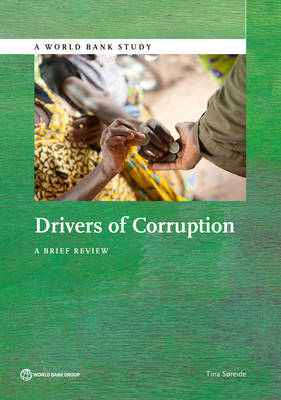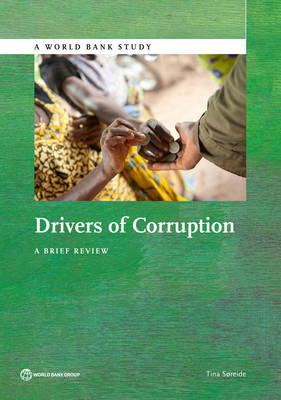
Je cadeautjes zeker op tijd in huis hebben voor de feestdagen? Kom langs in onze winkels en vind het perfecte geschenk!
- Afhalen na 1 uur in een winkel met voorraad
- Gratis thuislevering in België vanaf € 30
- Ruim aanbod met 7 miljoen producten
Je cadeautjes zeker op tijd in huis hebben voor de feestdagen? Kom langs in onze winkels en vind het perfecte geschenk!
- Afhalen na 1 uur in een winkel met voorraad
- Gratis thuislevering in België vanaf € 30
- Ruim aanbod met 7 miljoen producten
Zoeken
€ 25,95
+ 51 punten
Omschrijving
This report provides an overview of arguments explaining the risk of corruption. Corrupt acts are subject to decision making authority and assets available for grabbing. These assets can be stolen, created by artificial shortage, or become available as the result of a market failure. Assets that are especially exposed to corruption include profits from the private sector, revenues from the export of natural resources, aid and loans, and the proceeds of crime. Whether or not opportunities for corruption are exploited depends on the individuals involved, the institution or society they are part of, and the law enforcement circumstances. Corruption usually persists in situations in which players are aware of the facts but nonetheless condone the practice. Absence of reaction can result from information asymmetries (in which the people who are supposed to act are not aware of the need to act), coordination failure, patronage-determined loyalty, and incentive problems at the political level. This review of results and insights from different parts of the scholarly literature on corruption focuses on areas where research can guide anticorruption policy. The report also describes a number of corruption-related challenges in need of more attention from researchers.
Specificaties
Betrokkenen
- Auteur(s):
- Uitgeverij:
Inhoud
- Aantal bladzijden:
- 92
- Taal:
- Engels
- Reeks:
Eigenschappen
- Productcode (EAN):
- 9781464804014
- Verschijningsdatum:
- 15/10/2014
- Uitvoering:
- Paperback
- Formaat:
- Trade paperback (VS)
- Afmetingen:
- 178 mm x 254 mm
- Gewicht:
- 176 g

Alleen bij Standaard Boekhandel
+ 51 punten op je klantenkaart van Standaard Boekhandel
Beoordelingen
We publiceren alleen reviews die voldoen aan de voorwaarden voor reviews. Bekijk onze voorwaarden voor reviews.









